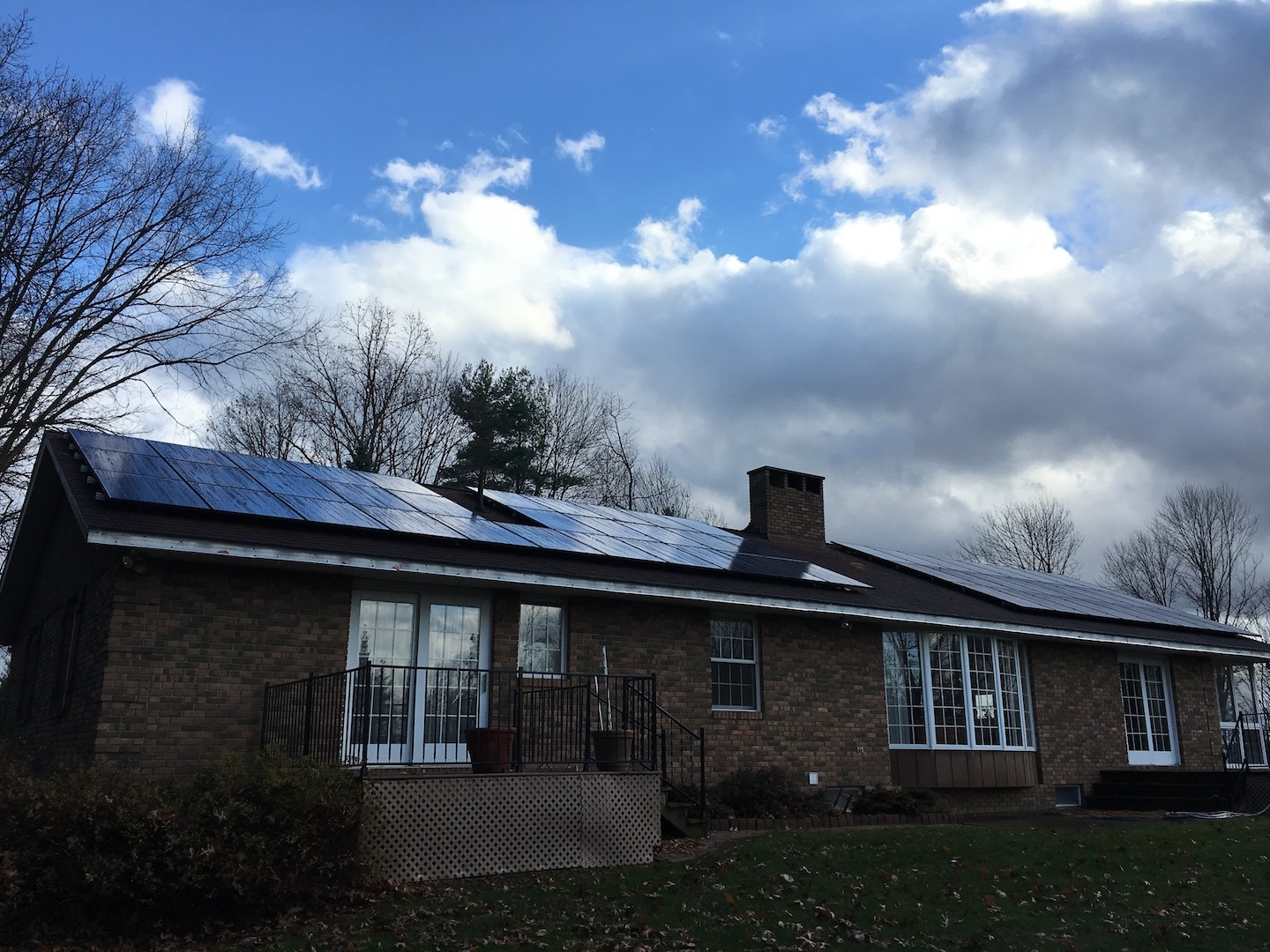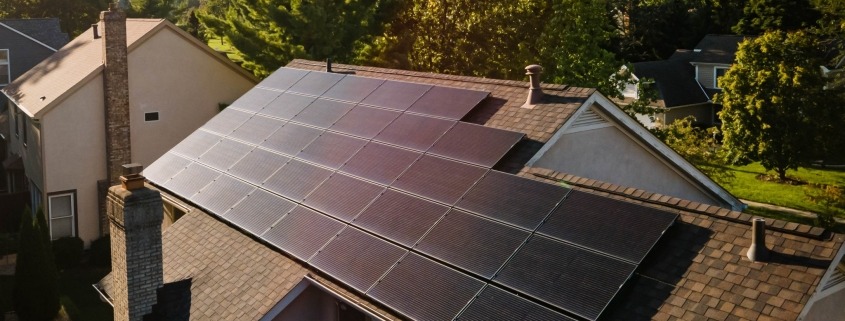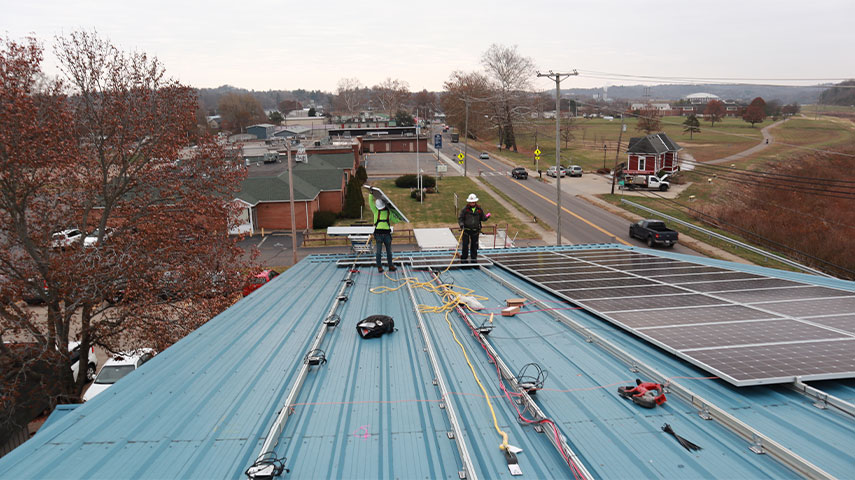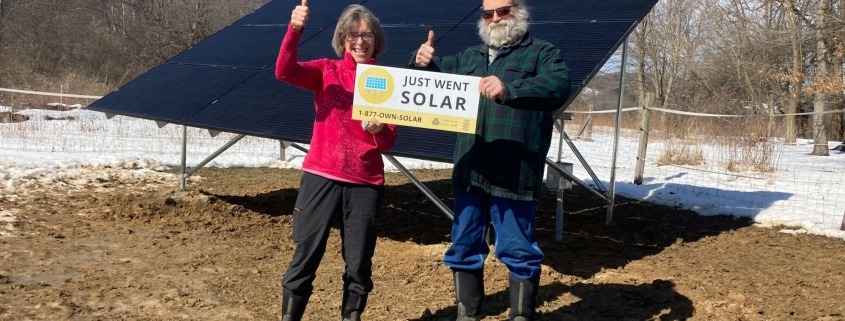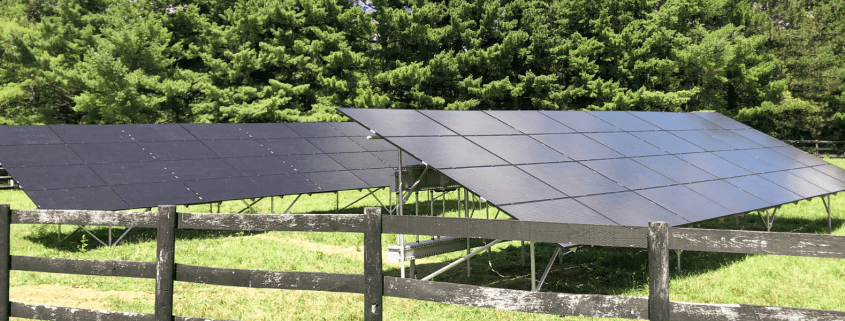One of the first questions we hear from folks who have heard about solar is: “how much will it cost me to have solar installed on my house?”
Have you heard something that sounds too good to be true? While some companies advertise $0 down and free at install – there is still a cost to the person buying the system. Like buying a car with a loan, you may not have to pay anything upfront or make no down payment. But you will be the owner of the solar panels and you will eventually begin making payments on the system.
There are plenty of websites around that try to help answer these questions, but they’re complicated and use a lot of industry jargon. We strive to make solar easy for you and that starts with cutting through the noise and laying it all out on the table. So let’s break it down.
So, how much does solar cost?
Our average home solar panel system costs $32,000 before any incentives are considered ($22,400 after the federal tax credit). For the typical home in Ohio, solar prices this year come in a range from about $25,000 to $40,000, on average, before the tax credit. All our systems are custom designed, so the average price is just an average.
Looking at the big picture: the price of home solar can range from $15,000 – $100,000 based on your energy usage, goals, batteries, and budget. The reason it is hard to find an easy answer to your question is because solar systems are custom designed based on several factors unique to you (more below). The best way to get an answer is to sign up for a free, no-obligation solar quote.
How do I get started?
Our Solar Consultants are ready to walk you through the options and help you calculate the economics and payback. With Smart Solar Financing, many of our clients are able to go solar for zero money down and have payments that are less than their old electric bills. We know you see solar as an investment with a stable and predictable return – and we look forward to helping you evaluate your options and harness the clean, free energy of the sun.
To start the free evaluation process with one of our Solar Consultants and get a more precise quote for your specific household, you can call us during regular business hours at: 877-696-7652 or you can complete our online form below.
Solar Array Cost Breakdown
- Solar Panels – the biggest part of your solar system
- Inverter – converts the energy generated from the solar panels (DC/ direct current) into energy that can be used by all the appliances and systems in your home (AC/ alternating current)
- Racking – attaches the solar panels to your roof or in place and angled in your yard
- Installation labor – our highly experienced in-house crew installs all the parts and pieces of your new clean energy power plant
- Design, permitting and admin – as a full turnkey installer, our team designs your system and files all permits with your local utility and inspection department. We take care to ensure that your local utility does their work needed to ensure the successful commissioning of your array.
- Other parts and pieces – nuts, bolts, wires, fuses all are all the small pieces necessary for a quality, long-lasting solar system.
Major Cost Variables
System Size
Price Impact: Boundless
Size is the most obvious adder when you consider solar. The size of the solar system will determine the system’s cost. As your system increases in size, it will require more materials and labor which will increase the price. But due to the economy of scale, as your system gets bigger the price per watt will come down. In other words, as you add more solar the number of watts you get for each dollar you spend goes down. (more on how we size a system below).
Ground Mount vs. Roof Mount
Price Impact: 10% – 15%
Our typical residential solar array is mounted on the roof of a home. But, in rural areas where land is boundless and shading might be an issue on the roof, some of our customers opt for a ground-mounted solar array. Because the trenching adds more labor to the job and the racking system requires more materials, the price for a ground-mounted solar array usually increases the cost of the project by about 10 – 15%. Over time, however, the added cost will be worth it. You may save more money by generating more power over the lifetime of the system.
Battery Storage
Price Impact: Varies Widely
Whether to increase self-consumption of solar rather than exporting it back to the grid or to have reliable power in times of power outages, batteries are exploding on the market. They are optional add on, not required when you go solar. We encourage solar shoppers to think about if solar batteries are part of their goals when going solar.
If system cost payback is most important to you – due to cost, batteries may not make sense.
But if energy resilience and having power during an outage is one of your goals, you’ll want to explore your solar energy storage options.
Solar Cost our Conclusion
We hope this information has helped you get an understanding of the genuine cost of a solar system. Here is a summary of the most important points:
- Our average residential solar system costs ~ $32,000
- Incentives can reduce the cost of the system by 30%
- The price of solar varies widely & is based on your personal: roof space, energy goals, budget
- The best way to get an answer to your question is to get a customized solar quote (see form below)


